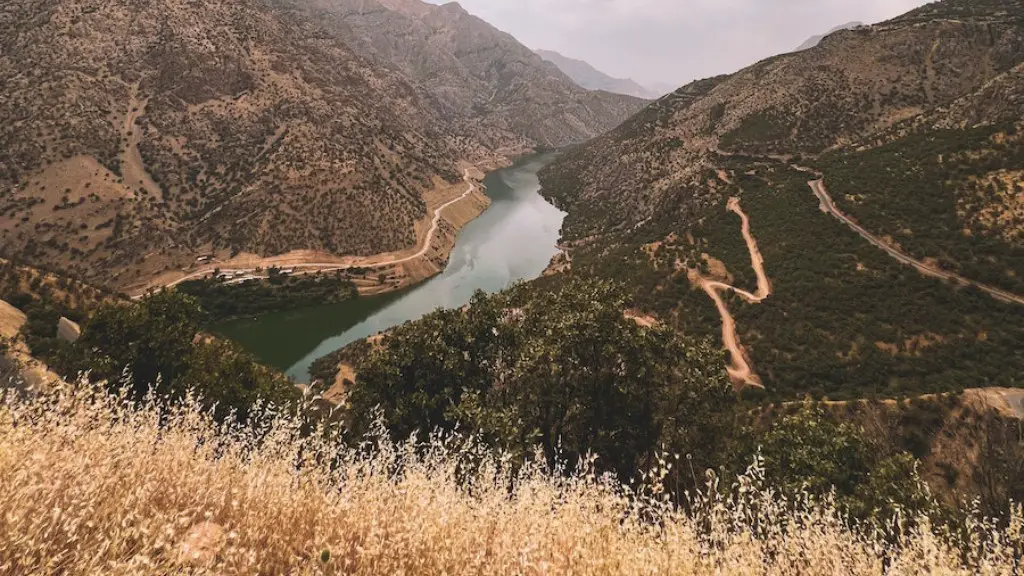Pollution of Mississippi River
The Mississippi River is the second largest river in the United States and is known for its ecological and economical importance. Unfortunately, the river has become contaminated with hazardous pollutants such as agricultural runoff and industrial waste. These pollutants have caused an array of health and environmental issues for the people who use its waters for recreation, such as swimming.
Health Impacts
The pollutants found in the Mississippi River have a significant impact on the health of anyone who swims in its waters. These pollutants can seep into swimmers’ skin and can cause serious health problems. The most common health issue associated with swimming in contaminated rivers is skin irritation and burning, but long-term exposure to the contaminated water can also lead to respiratory and gastrointestinal illnesses as well as neurological illnesses.
Water Quality
The quality of the water in the Mississippi River is also an important factor in determining its safety for swimming. The River carries a wide array of contaminants, ranging from heavy metals and pesticides to disease-causing microorganisms. The level of contamination can vary from one area of the river to the next and can be affected by an array of environmental factors, such as rainfall and temperature.
Toxins and Microorganisms
The EPA (Environmental Protection Agency) has identified certain toxins and microorganisms that can be found in contaminated rivers, and swimming in these waters can be dangerous. These toxins and microorganisms can cause a range of illnesses, from skin irritations to serious gastrointestinal and neurological illnesses. The EPA has established a list of acceptable levels of pollutants and toxins that must be met before swimming in a river is safe.
State and Federal Regulations
All states have issued regulations regarding the safety of swimming in rivers, including the Mississippi River. These regulations can be stricter than the EPA’s standards and often include requirements such as testing the water for bacteria, monitoring the river’s water quality, and enforcing restrictions on water contact recreation such as swimming. Additionally, the US Clean Water Act sets standards for the preservation and protection of our nation’s waters, including the Mississippi River.
Expert Opinions
Experts in the field of water health and safety generally agree that it is not safe to swim in the Mississippi River. There are simply too many pollutants and the levels of contamination are too unpredictable and uncontrolled to make swimming a safe activity. Even when the river meets the standards outlined by the EPA and state regulations, swimming is still discouraged due to the inherent risk of exposure to toxic chemicals and microorganisms.
Conclusion
Swimming in the Mississippi River is unsafe and should be avoided. The pollutants found in the river can seep into swimmers’ skin and cause a range of health problems. Additionally, the water may contain toxins and microorganisms that can lead to serious illnesses. It is important to check with local authorities for updates on river health and adhere to all regulations regarding water contact activities.
Impacts of Human Interference
Humans are one of the leading contributors to environmental damage in rivers and other waterways, from polluting them with agricultural runoff, to building dams that interfere with the river’s natural flow and changing the river’s ecosystems. These activities have an adverse impact on the overall health of the Mississippi River, and have made it increasingly difficult to swim and recreate in it.
Environmental and Economic Costs
The environmental and economic costs of leaving the Mississippi River in its current state are far-reaching. The heavy pollutants that contaminate the water can cause long-term damage to the local ecosystem, leading to an inability to support important fish species and the health of other aquatic animals. Additionally, the people who rely on the river for fishing, trade, and tourism suffer economically due to the harmful pollutants that have been released into the water.
Government Action
The US government has taken steps to reduce the amount of pollutants being pumped into the river and to protect the health of humans and the environment. These include installing water treatment plants, regulating toxic chemicals, setting pollution standards, and enforcing water use restrictions. Additionally, the government has partnered with local non-profits and organizations to promote education around water safety and to encourage individuals to take personal responsibility to keep their rivers clean and safe.
Education and Awareness
As with any activity, education and awareness are key components of protecting the Mississippi River. It is important to understand the risks associated with swimming in the river and be aware of the actions that can be taken to protect the river from further pollution and environmental damage. Additionally, local organizations and community groups are working to raise awareness about the importance of keeping the river healthy, and to educate individuals about how their everyday choices can have an impact on the health of the river.
Sustainable Practices
There are many small steps that individuals can take to protect the health of the Mississippi River. These include reducing usage of straws, chemicals, and other disposable products, disposing of hazardous materials properly, and reducing runoff by planting trees and vegetation to help filter contaminants. Additionally, organizations and businesses can strive to implement sustainable practices into their daily operations, such as using renewable energy sources, minimizing energy consumption, and decreasing water use.



